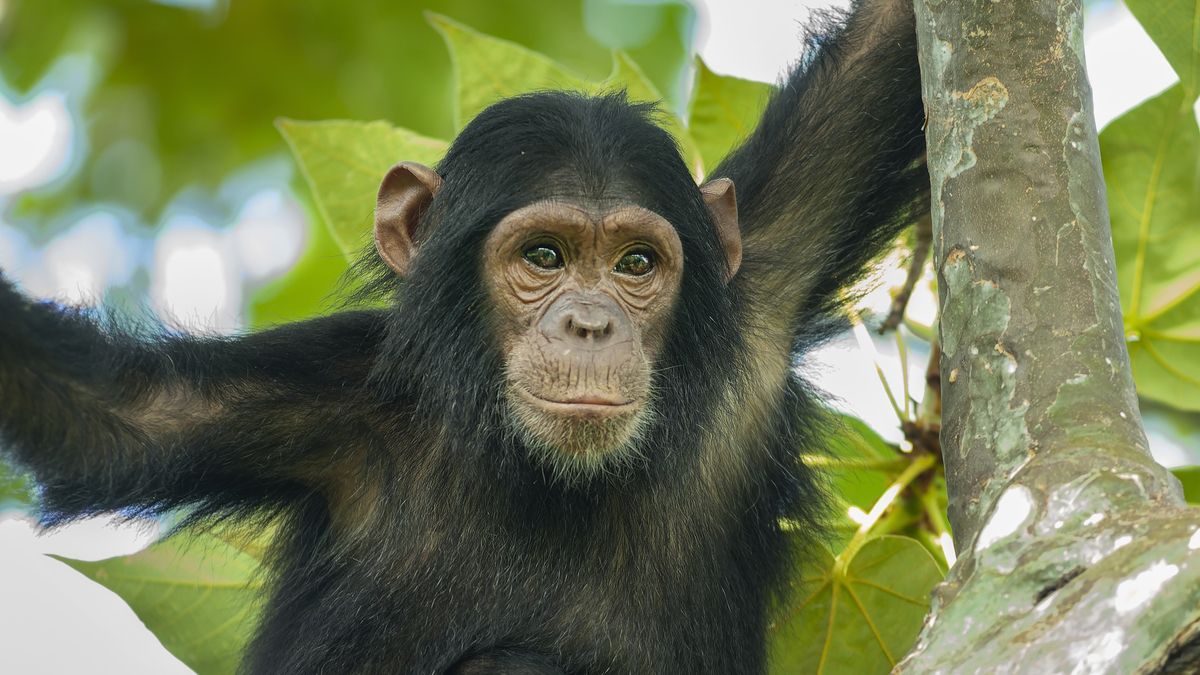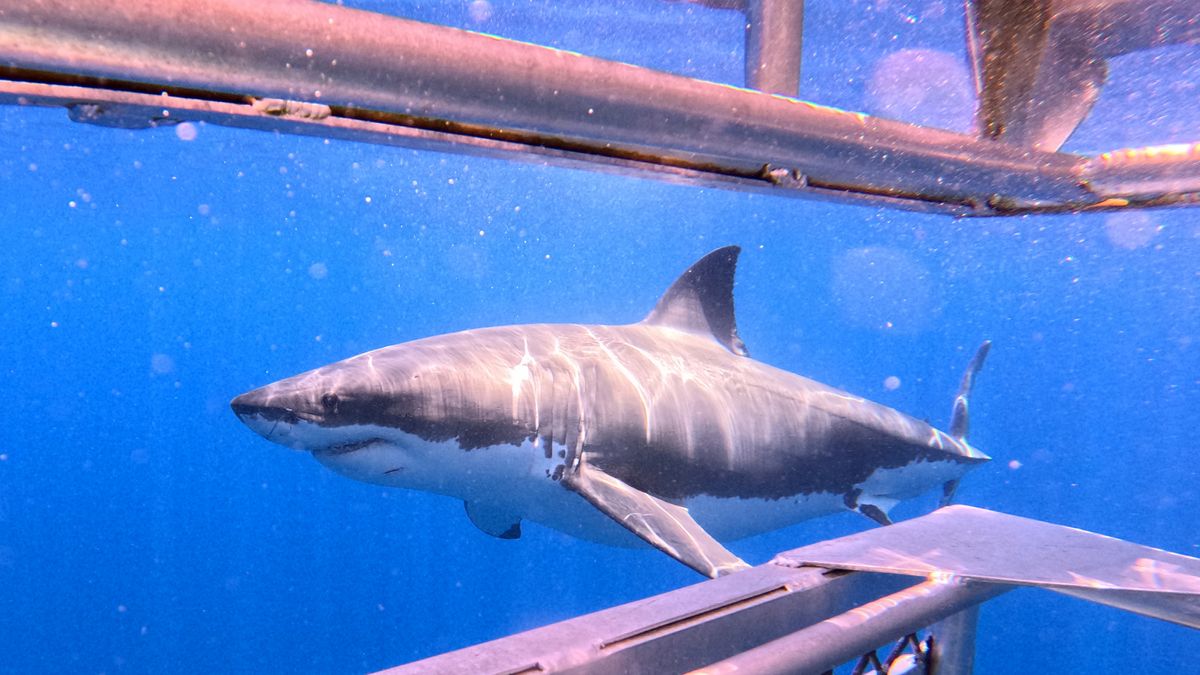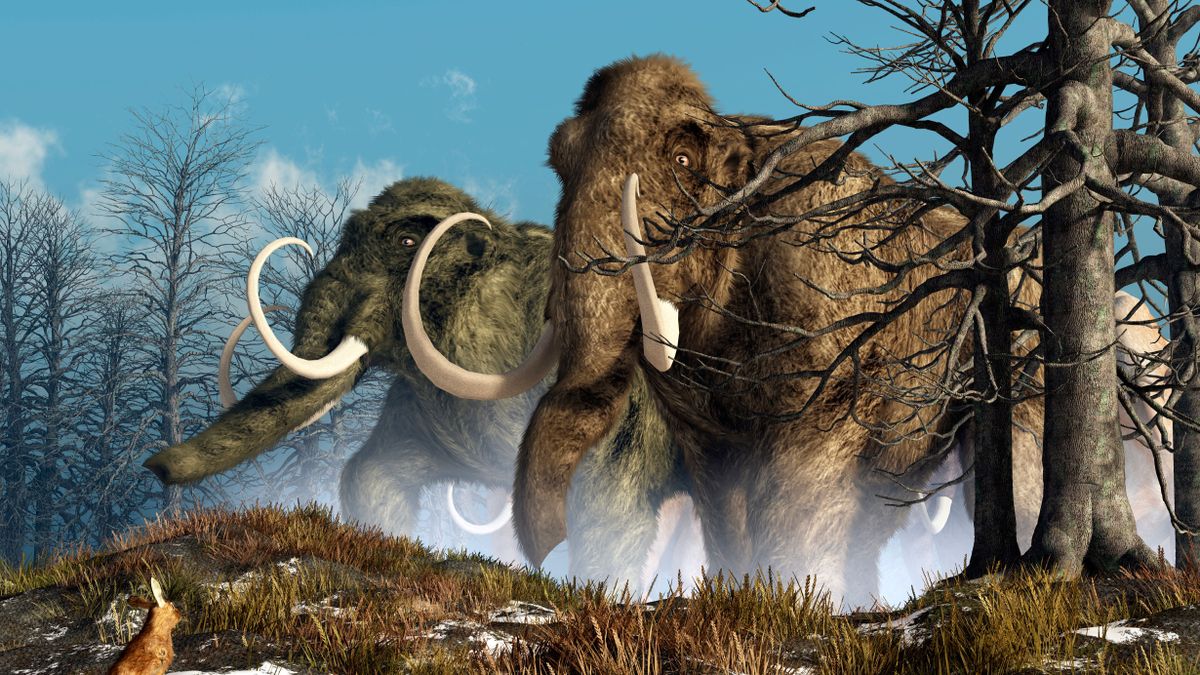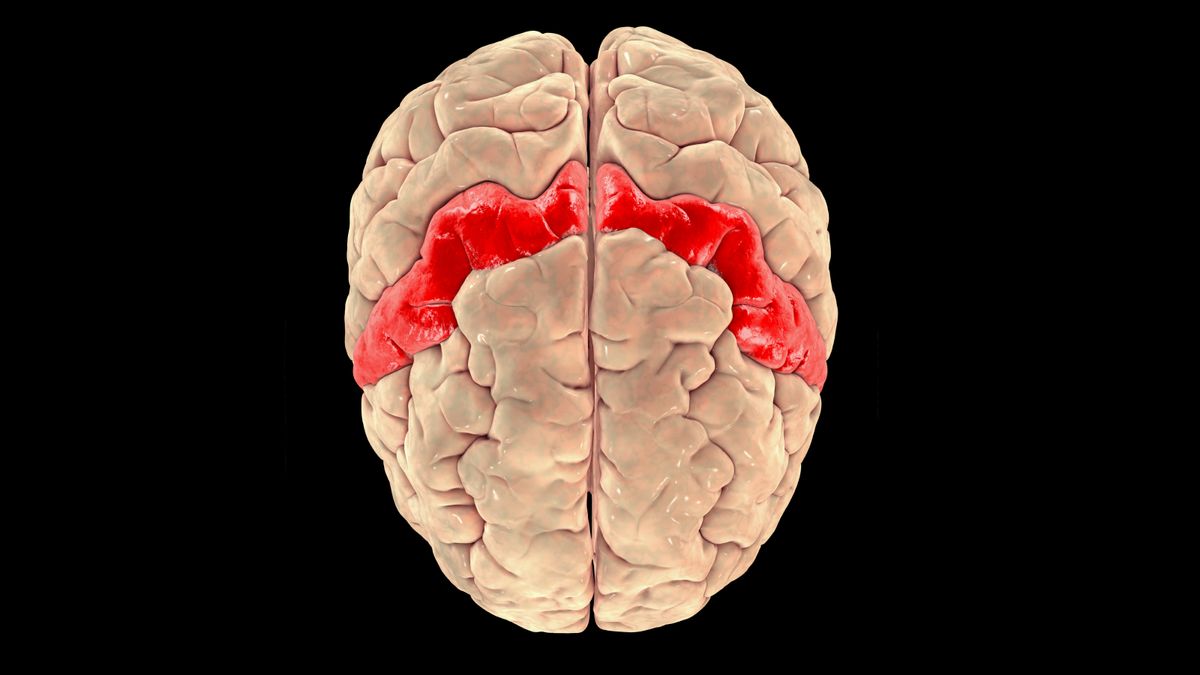Measuring animal intelligence is tricky. As humans, we can only compare the smarts of other creatures with our own — an inherently biased benchmark.
“Asking which species is smarter is like asking if a hammer is a better tool than a screwdriver,” Brian Hare, founder and director of Duke University’s Canine Cognition Center, told PBS in 2018. “Each tool is designed for a specific problem, so of course it depends on the problem we are trying to solve.”
Scientists don’t have a standard definition or test for “intelligence.” Some look at tool use, brain-to-body ratios, brain sizes, problem-solving abilities or self-awareness, but whether these measures really capture animal intellect is debatable.
Still, some animals show remarkable cognitive abilities that sometimes rival our own. Here are 32 of the smartest animals on the planet.
Chimpanzees
Chimpanzees (Pan troglodytes) and bonobos (Pan paniscus) are Homo sapiens‘ closest relatives. Both share almost 99% of our DNA and are widely considered some of the brightest creatures in the animal kingdom.
In 1960, chimps became the first nonhuman animals to be documented using tools — an ability scientists previously thought was unique to humans. Further research has uncovered complex social lives, a range of human-like emotions and metacognition, or the ability to “think about thinking.” In certain brain and memory games, scientists discovered that chimpanzees actually outperform humans, according to a study published in the journal Nature in 2014.
Researchers have even taught chimpanzees to use American Sign Language. Washoe, the first nonhuman primate to learn to sign, learned 350 signs before she died in 2007. Her adoptive son, Loulis, learned about 50 signs entirely from Washoe and other signing chimps. Subsequent research challenged whether chimpanzees can actually combine words to create new ideas or whether they simply memorize signs.
Dolphins

Dolphins are so smart that many consider them the second-most-intelligent creatures on Earth. These cetaceans have complex social lives, understand abstract concepts, use tools, solve problems, show sophisticated emotions and have an incredibly high brain-to-body ratio (about the same as Homo habilis, an archaic human species). Studies have also shown that bottlenose dolphins (Tursiops truncatus) can recognize themselves in a mirror and may be capable of metacognition.
Like dogs, dolphins can learn commands from humans. These creatures are so good at communicating with us that back in the 1960s, researchers believed we might even learn to “speak” to them by giving them LSD. While these tests failed, researchers have continued attempting to decode dolphin clicks and whistles. In 2013, scientists discovered that dolphins identify each other by unique names and that they can remember these names for at least two decades.
The U.S. Navy has trained both dolphins and sea lions to detect trespassers in forbidden areas like piers, harbors and ship channels. Dolphins have also been used to detect unexploded underwater mines.
Bonobos

Like their chimpanzee cousins, bonobos (Pan paniscus) have incredible mental prowess. Some researchers think these primates, along with chimps and orangutans, have a cognitive ability known as “theory of mind.” Creatures with theory of mind understand that other beings think differently and have different beliefs and desires.
Bonobos are good problem-solvers and adept at solving tasks that require an understanding of social causality. Research has suggested that bonobos and chimpanzees can remember familiar faces after at least 26 years of separation.
Unlike chimps and humans, bonobos have never been documented killing each other. Male bonobos engage in frequent squabbling, but their fighting is usually less intense than that of their great ape relatives. Research has suggested that bonobos are tolerant of outsiders, will readily share food (but not toys or tools) and solve conflicts through sex.
Sperm whales

The sperm whale (Physeter macrocephalus) has the biggest brain of any animal on Earth today, with an average weight of 17 pounds (7.8 kilograms). Though scientists have long argued whether brain size — and even brain-to-body ratio — is a good indicator of high intelligence, many agree that sperm whales are some of the smartest creatures in the ocean.
Sperm whales form tight-knit family groups with distinct cultures. To communicate with one another, the whales produce patterns of clicks called codas. These codas differ from group to group, similar to dialects in human language. Sperm whales excel at learning from one another. In the 19th century, they were prime targets for whalers, but research suggests these creatures taught each other how to avoid attacks.
Pigeons
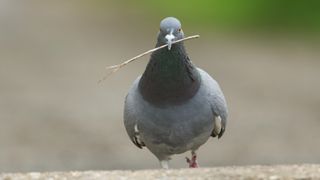
Pigeons aren’t as “bird-brained” as they may appear. They can count, recognize words, and have an impressive memory and excellent vision. Pigeons can also differentiate categories of objects. In 2015, scientists taught pigeons to sort 128 images into 16 categories. When presented with new images from the categories, the pigeons could still sort them correctly. Pigeons can also recognize themselves in a mirror.
In an unusual study in 1995, researchers taught pigeons to discriminate between the artwork of Monet and Picasso. After some training, the birds were presented with a new-to-them piece of art and were able to determine which artist had painted it. The pigeons were then further trained to distinguish between Monet, Cezanne and Renoir pieces and then between Picasso, Braque and Matisse paintings. And in a 2015 study, researchers discovered that pigeons could be trained to detect cancer in breast pathology images.
During World War II, before guidance technology systems were created to aim missiles, experimental psychologist B.F. Skinner taught pigeons to accurately guide missiles to a target. The system, known as “Project Pigeon,” proved incredibly successful, but it was shut down before it could be put to use.
Elephants
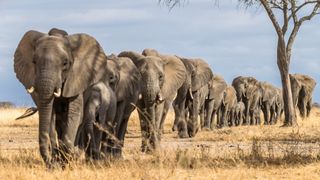
Elephants have the largest brains of any land animal. These giants have extraordinary memory, high social intelligence, excellent problem-solving abilities and complex emotions.
In a 2014 study published in the journal PNAS, researchers discovered that African elephants (Loxodonta africana) could identify the voices of the most threatening humans based on their ethnicity, gender and age.
Elephants are widely recognized as some of the world’s most empathic creatures. They live in tight-knit family groups and have been recorded helping each other in distress and grieving for their dead. Elephants use tools and complete tasks, and they even understand when their own bodies hinder them from solving problems. Like the mirror test, which elephants have also passed, this may be an indication of self-understanding, some researchers say.
Octopuses
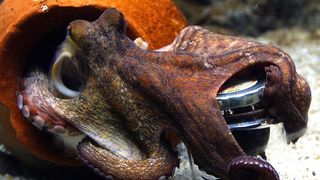
Researchers think common octopuses have an impressive 500 million neurons in their nervous systems — about as many as a dog. They have the largest brain-to-body ratio of any invertebrate. These cephalopods have a reputation for being exceptionally talented escape artists and puzzle solvers. They can unscrew jars from the inside, untie knots, use tools, recognize individual humans and play pranks. When hunting, California two-spot octopuses (Octopus bimaculoides) can be quite calculated; their arms work together in specific, choreographed motions that differ depending on which animals they’re going after.
While octopuses are more genetically similar to other mollusks, like squid and cuttlefish, than to humans, we do have some genetic similarities. Both humans and octopuses have an abundance of “jumping genes” — DNA sequences that move from one location in the genome to another. Interestingly, octopuses have more protein-encoding genes than humans do — over 33,000, compared with our 20,500.
Rats
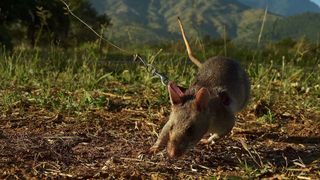
Rats get a bad rap, especially in densely populated cities. These creatures are so reviled that, in 2023, New York City Mayor Eric Adams appointed the city’s first-ever “rat czar” to eliminate the rodents. While it’s true that rats can transmit pathogens — including hantavirus; Rickettsia typhi (which causes murine typhus); Spirillum minus and Streptobacillus moniliformis (which cause rat-bite fever); and Salmonella — to humans, rats are actually clean, intelligent creatures. They groom even “more frequently and thoroughly than cats,” Dr. Jennifer Graham, a veterinarian at the Henry and Lois Foster Hospital for Small Animals, said in a 2020 interview.
Rats can learn tricks, solve puzzles, feel empathy, rescue friends in need and even have an imagination. In a 2014 test of rat learning and cognition, researchers found that rats can even outperform humans in implicit category-based generalization, or the ability to apply certain learned patterns to new sets of information. Research published in the journal Current Biology in 2007 suggested that rats may be among the few nonprimates capable of metacognition.
Orangutans

All great apes have advanced mental capabilities, and orangutans (Pongo) are no exception. These apes are excellent learners; an orangutan named Chantek became one of the first apes to learn sign language, and he even invented signs of his own. Chantek was raised by an anthropologist and learned to clean his room, use the toilet, play games and paint.
A 2018 study in the journal Science suggested that orangutans are capable of “displaced reference” — the ability to reference things not happening in the present. In their study, researchers disguised themselves as big-cat predators and watched how orangutan mothers with young would respond. The scientists reported that after spotting a predator, the orangutan mothers ushered their young to safety but waited to sound the alarm until after the danger had passed.
“There was no reason for orangutan females to vocalize after a predator model was removed, but they did so nonetheless,” researchers wrote. They hypothesized that the orangutans were teaching their young that they had been in danger. “Postponing behavior in time and space inherently expresses a role of high cognitive processing of the stimulus and general intelligence,” the researchers said.
Crows

Crows and other corvids are some of the most intelligent birds on Earth, and their mental prowess may even rival that of some primates. These animals have been documented remembering human faces, creating and using tools, making statistical inferences and solving puzzles. Like some primates, some crow species can recognize themselves in a mirror. Crows have about the same number of tightly packed neurons in their brains — 1.5 billion — as some monkeys do.
Researchers have found that New Caledonian crows (Corvus moneduloides) rival 5- to 7-year-old children in their causal reasoning. To test this, scientists often use an experiment known as the Aesop’s Fable paradigm, in which subjects drop stones into water tubes to displace the water and reach floating treats. Not only did the crows successfully obtain their treats; they also understood that dropping heavy objects displaced more water than floating ones did.
In a 2022 study in the journal Science Advances, scientists suggested that crows are capable of recursion — or “embedding structures within similar structures.” In linguistics, for example, the phrase “the cat chased” could be embedded in the sentence “The mouse ate cheese” to form a new sentence: “The mouse the cat chased ate cheese.” Some researchers have argued that recursion is unique to human language, but some studies have suggested that European starlings (Sturnus vulgaris), rhesus macaques (Macaca mulatta) and crows understand this concept.
African gray parrots
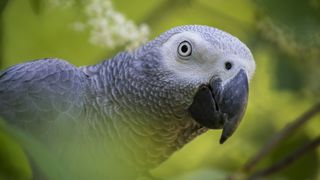
African gray parrots (Psittacus erithacus) also rank among the world’s smartest birds. These parrots can outperform 5-year-old children in certain cognitive tests and help other birds in need. In 2005, researchers working with a 28-year-old African gray parrot named Alex discovered that he might understand the concept of zero, which human children typically don’t grasp until age 3 or 4. Chimpanzees and squirrel monkeys also show some understanding of the concept, but Alex was the first bird to show this ability — though his interpretation of zero may be different from humans’.
“It seems likely that these skills are based on simpler cognitive abilities they need for survival, such as recognition of more versus less,” Irene Pepperberg, lead researcher and a comparative psychologist and cognitive scientist, said in a statement at the time.
Dogs

Homo sapiens‘ best friend, dogs (Canis lupus familiaris) can read human social and communication cues, learn words, feel jealousy and smell when humans are stressed or sick. Researchers have compared the mental power of dogs to that of 2-year-old children, though cognitive ability varies among breeds and individuals. Per the American Kennel Club, the five smartest breeds are the border collie, poodle, German shepherd, golden retriever and Doberman pinscher.
“The world’s smartest dog,” Chaser, learned more than 1,000 nouns and could understand categories, such as “balls,” and adjectives, like “bigger.”
Bees
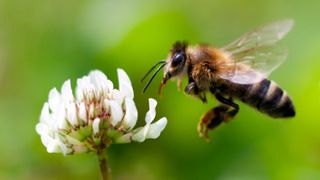
Bees may be the world’s smartest insects. They can count, communicate with one another, solve mazes, recognize human faces and learn. Researchers even discovered that bees have distinct personalities and emotional lives. But these animals see the world much differently than we do, making it hard to discern exactly what’s going on in their tiny brains. For example, bees can see ultraviolet and polarized light, which helps them navigate and forage for food. Researchers have also discovered that bumblebees can sense electrical fields in the air — an ability scientists once thought was unique to animals that navigate through the water.
In 2017, scientists found that bumblebees could be trained to use a simple tool to gain a food reward. Three years later, researchers reported the first observed use of tools in wild honey bees (Apis cerana) after witnessing them using animal feces to defend their colonies against giant hornets.
Gorillas

The famed gorilla Koko was one of only a few animals to use a form of sign language to communicate with humans. She mastered more than 1,000 modified American Sign Language signs and understood more than 2,000 spoken words. Before her death in 2018, Koko formed deep bonds with her human caretaker, Penny, who taught her how to sign.
Like other great apes, gorillas use tools, can solve problems and have good memories. Research published in the journal Proceedings of the Royal Society B in 2019 suggests that gorillas, along with orangutans and chimpanzees, may be more intelligent than the early hominin Australopithecus.
Orcas

Orcas (Orcinus orca) are the ocean’s top predators and the largest species in the dolphin family. Despite being renowned for their brawn, these cetaceans are also exceptionally brainy. Their brains can weigh up to 15 pounds (6.8 kilograms) — the second largest of all ocean mammals, behind sperm whales.
Orcas have their own language, including local dialects; incredible problem-solving skills; and complex emotions. They teach and pass on information for generations. And in a 2016 study in the journal Animals, researchers reported instances of orcas playing pranks on humans.
Like humans, orcas have social “fads.” In the 1980s, a bizarre trend of wearing dead “salmon hats” emerged in orcas in the Puget Sound area. For five to six weeks, the fishy headdress trend spread to orcas in three pods before going out of style.
Like their bottlenose dolphin cousins, orcas can be trained to perform tricks — though many have condemned the practice because of the mental and physical harm the animals endure while in captivity. Since 1961, 166 orcas have been captured from the wild and placed into captivity. As of January 2024, 18 orcas are still captive in marine parks across the United States.
Cuttlefish
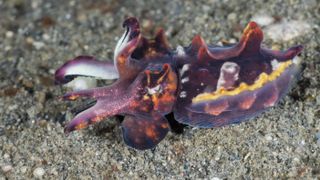
Cuttlefish have one of the largest brain-to-body ratios of any invertebrate. These marine mollusks can count their prey; solve mazes; and remember what they ate and when and where they ate it. Their memory does not decline with age. Cuttlefish are also masters of disguise; they can change their appearance at will to mimic the colors and textures of their environment. When attempting to mate with a female, smaller males will sometimes mimic the female pattern and even pretend to hold an egg sac to sneak past larger guard males.
In a 2021 study, researchers performed the “marshmallow test” — a famous experiment to study delayed gratification — on six cuttlefish, and determined that cuttlefish can exert self-control.
“Self-control is thought to be the cornerstone of intelligence, as it is an important prerequisite for complex decision-making and planning for the future,” lead author Alex Schnell told Live Science at the time.
Poison dart frogs
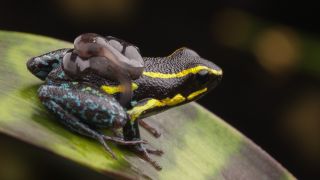
While frog brains are not well understood, scientists made a breakthrough in 2019, when they discovered that, like birds and mammals, poison dart frogs use cognitive maps. This was the first case of cognitive mapping — that is, making mental representations of the external world — documented in amphibians. Poison dart frogs also “exhibit unusually complex social and spatial behaviors and are capable of long-distance homing,” researchers wrote in the study.
“We hypothesize that because of their natural history, poison frogs evolved a more advanced cognitive ability — to flexibly use environmental cues to find locations,” Sabrina Burmeister, an associate professor at the University of North Carolina at Chapel Hill and senior author of the study, told National Geographic at the time. “You’re not likely to find these abilities in all frog species.”
Fruit flies
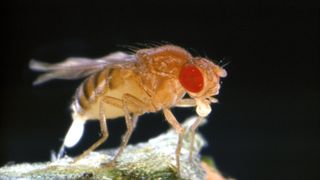
While fruit flies (Drosophila melanogaster) may not seem particularly bright, these tiny creatures actually have incredible brain power for their size. Fruit flies are capable of conscious awareness, learning, remembering and attention. Despite being about the size of a poppy seed, a fruit fly brain contains about 200,000 neurons and other cells. In comparison, humans have 86 billion neurons.
“Even though these brains are simple [in contrast to mammalian brains], they can do a lot of processing, even more than a supercomputer,” Christopher Potter, an associate professor of neuroscience at the Johns Hopkins University School of Medicine, said in 2021. “They enable the insects to navigate, find food and perform other complicated tasks at the same time.”
Because of the similarities between human brains and fruit fly brains, D. melanogaster is often used as a model organism in scientific research, particularly in neuroscience studies.
Raccoons

Raccoons (Procyon lotor) are often viewed as mischievous and adroit — and studies show they may live up to this reputation. Raccoons can open doors and windows, break into containers and remember and learn from others. Under experimental conditions, raccoons have been documented using tools.
In the early 20th century, psychologists favored raccoons as test subjects for scientific research because of their curiosity and intelligence. But their tendency to outsmart researchers by chewing through their cages and finding ways to escape and hide in the ventilation of lab buildings led scientists to turn to rats instead.
Because of their craftiness, raccoons can be destructive in urban and suburban environments, causing homeowners thousands of dollars in property damage by tearing up roofing, pulling apart vents, chewing electrical wiring, digging up gardens, and leaving behind urine and excrement in houses. Yet humans are largely responsible for raccoons’ status as nuisance animals; as urbanization destroys raccoon habitats, these critters are forced to live in close proximity to us and scavenge food.
Ravens
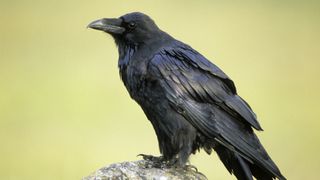
Like their crow relatives, ravens belong to the highly intelligent Corvus genus. These birds solve puzzles, communicate efficiently with one another, trick other animals into helping them and have complex social interactions. Like squirrels, ravens tend to cache their food to retrieve it later. Researchers have documented ravens watching others hide food, remembering hiding spots and stealing food. But ravens also know when they’re being watched and will take extra care when hiding their meals.
In a 2017 study in the journal Science, researchers found that ravens rival great apes in their ability to plan for tool use and bartering. These birds can plan for events 17 hours in advance, and they display impressive levels of self-control when making decisions for the future. When put through a series of other cognitive intelligence tests — including theory of mind, causality and social learning — researchers discovered that 4-month-old ravens show similar abilities to full-grown chimpanzees.
Cats

While pet owners will always debate whether cats or dogs are smarter, there’s no doubt that domestic cats (Felis catus) are intelligent. A 2015 review of cat cognition found that cats have a “highly developed” long-term memory, may be able to discriminate between quantities, engage in social behaviors, are sensitive to human cues and form attachments to humans.
But cat behavior research is quite limited, partially because we have “less expectation for cat behaviors,” Dr. Carlo Siracusa, a veterinary behavior expert at the University of Pennsylvania, said in a statement. “If you have a dog growl and bark at everyone who comes to your apartment, that’s a major problem, but if your cat hisses and then runs and hides, nobody cares.”
Squirrels
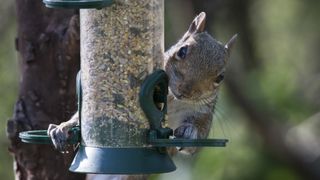
If you’ve ever tried to stop a squirrel from feasting at a bird feeder, you know these rodents can be quite persistent and crafty. Squirrels are great problem solvers, correct their mistakes, learn and have long memories. In 2013, scientists tested the memories of gray squirrels and found they could recall the solutions to problems they hadn’t encountered in two years.
Studies into squirrel “caching behavior” — the system of stashing and retrieving hidden nuts — has shown that squirrels can remember where they buried thousands of nuts and even organize them by type. When being watched, squirrels trick others by digging a hole and covering it up without depositing a nut inside.
Sea lions

Sea lions have large, intensely folded brains that are about the size of a chimpanzee’s. These pinnipeds can be trained to do tricks, perform tasks and help with military operations. Since 1959, the U.S. Navy has been using sea lions to retrieve objects in harbors, coastal areas and the open sea. And as it did with dolphins, the Navy has taught sea lions to detect unauthorized swimmers and divers.
According to PBS, a sea lion named Rio was the first nonhuman animal to display a higher-order reasoning that researchers thought was exclusive to humans. After training with handlers to associate a certain image (image A) with another image (image B) and image B with image C, Rio could correctly pair image A with image C. After more than two decades of training, Rio has learned to associate certain sounds with particular symbols or letters and has demonstrated an ability to remember concepts she learned 10 years ago.
Capuchins
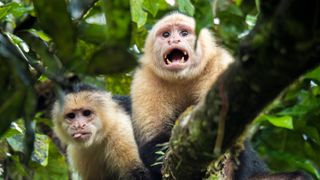
Of the five families of New World monkeys, Cebidae — which includes capuchins (Cebus) and spider monkeys (Ateles) — may be the most intelligent. Capuchins learn quickly and have excellent memories, so they’re often trained to perform in movies and TV shows.
Capuchins are adept at using and manipulating tools and have high social intelligence. In a 2009 study in the Japanese Journal of Animal Psychology, researchers reported that capuchins are “capable of recognizing attentional states of humans, inferring consequences of other’s behavior, recognizing other’s knowledge status, inferring the cause of other’s emotional expression and recognizing other’s welfare.”
Magpies

Magpies are known for being intelligent birds with a penchant for thievery. Though their bandit reputation is mostly myth, they are incredibly smart and one of only a few bird groups to have passed the mirror test. Magpies are excellent problem solvers, have great memories, make and use tools, and display complex social behaviors.
These birds have also outsmarted scientists: In a 2022 study in the journal Australian Field Ornithology, researchers reported that Australian magpies worked together to remove GPS tracking devices from each other.
“It is possible that what we have observed is the first documented case of rescue behaviour in Australian magpies,” the authors wrote. “The observed behaviour is also indicative of complex cognitive problem solving.”
Ants
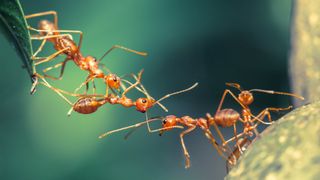
Like bees, ants are highly social creatures with complex social structures. Ant colonies are incredibly well organized, and they efficiently divide their labor to ensure the colony’s survival. Together, worker ants can build huge, architecturally complex nests.
Ants can navigate across long distances, communicate with each other and learn very quickly. In a study published in the journal Royal Society Open Science, researchers discovered that the memories of Formica fusca ants can last up to three days. And in 2020, scientists found that Eciton hamatum ants build living bridges to create a shortcut for foragers, without needing oversight from a leader. These bridges are continuously modified based on traffic levels and environmental geometry.
Monitor lizards
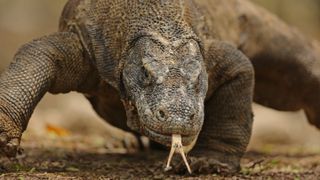
Monitor lizards not only take the cake for the largest lizards in the world (Komodo dragons), but they are also some of the smartest. At the National Zoo in Washington, D.C., keepers have reported that Komodo dragons (Varanus komodoensis) have their own personalities, recognize each keeper and exhibit curiosity. These large lizards are the first reptiles with clearly documented play behaviors, per a 2013 paper in the journal Applied Animal Behaviour Science.
“These animals seem to be in a psychologically different place than other lizards,” study author Gordon M. Burghardt, a professor at the University of Tennessee, wrote in the paper. “As these animals are becoming more common as trophy reptiles in zoos, they can easily become the great ape of the squamate reptile world.”
Experiments on captive rock monitors (Varanus albigularis) suggest that these lizards can “count.”
In 2020, researchers tested the memories of two species of monitor lizard and found they could learn to solve puzzles and remember the solutions 20 months later.
Otters
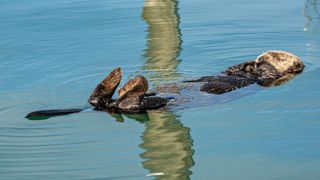
Sea otters (Enhydra lutris) may be among the cutest animals on Earth, but they’re also crafty and particularly deft at using tools. According to a 2017 study in the journal Biology Letters, sea otters have likely been using tools, such as rocks to open hard-shelled mollusks, for thousands, or even millions, of years. In comparison, researchers think dolphins learned to use tools around 200 years ago. Unlike dolphins, which teach their young to use tools, sea otters seem to innately have this ability.
Otters can also be trained to respond to verbal cues. In aquariums, keepers train otters to participate in their own health care. For example, otters can learn to stand on a scale or present a specific body part to trainers for inspection.
Cleaner wrasses
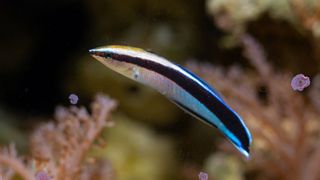
In 2019, researchers reported that the cleaner wrasse (Labroides dimidiatus) became the first fish to recognize itself in a mirror — a controversial test that some scientists say confirms self-recognition. After the tiny fish joined the highly exclusive mirror-passing list, however, debates raged about the test’s legitimacy.
“For 50 years, for whatever reason, people just nodded along and said yes, that”s the test for self-consciousness,” lead researcher Alex Jordan, an evolutionary biologist at the Max Planck Institute of Animal Behavior in Germany, told The Atlantic in 2023. “But when a fish came knocking on the door, suddenly it blew up.””
Self-aware or not, cleaner wrasses have outperformed capuchin monkeys, chimpanzees and orangutans in complex foraging tasks. In 2012, researchers set up an experiment that required the animals to choose between two different actions; each yielded an immediate reward, but only one offered an additional, delayed reward. Adult cleaners “learned to solve the task quickly and relearned the task when it was reversed,” per the study. The primates, however, failed to perform above chance over 100 trials.
Cleaner wrasses also have a reputation for being the “con artists” of coral reefs. These fish earned their name by cleaning parasites off of other fish in the sea — a mutually beneficial relationship. However, researchers have discovered that wrasses tend to “cheat” their clients by sneaking bites of nutrient-rich mucus, which the clients don’t want to lose. The devious wrasses prefer to cheat larger fish and perform “honest” cleaning services for smaller fish while the larger ones watch.
Portia spiders
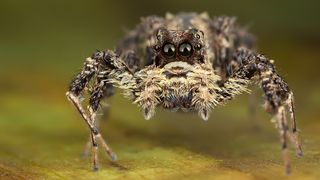
Jumping spiders in the genus Portia are known for their flexibility, problem-solving skills, memory and incredible vision. Lab experiments have shown that these arachnids can make strategic decisions when attacking their prey, including planning detours that last up to 80 minutes. Portia spiders sneak up on their victims using a variety of deceitful tactics, including mimicking courtship displays, pretending to be prey or detritus caught in a web, and simulating wind in another spider’s web to disguise their approach. Although these spiders have incredible hunting abilities, the brain of a Portia spider could fit comfortably on a pinhead.
Goats
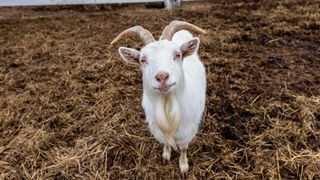
Goats (Capra hircus) have a reputation for being thickheaded, but they may be among the world’s smartest ungulates. They have excellent memories and good problem-solving abilities, and they can distinguish human facial expressions.
Researchers tested the memories of goats by presenting 12 of the animals with a puzzle box to solve. Nine of the 12 learned the task quickly and could remember the solution 10 months later. Other studies have found evidence that goats can distinguish a happy human voice from an angry one and a happy face from an angry one. When presented with an impossible task, goats turn their gaze to humans in an intentional, communicative behavior that both dogs and horses do when looking for a treat. Goats are also excellent escape artists and notorious for coming up with ways to sneak out of their enclosures.
Humans

Of course, by our own standards, modern humans (Homo sapiens) are the smartest species. We’ve built complex societies, made incredible technological advances, developed languages, and can think logically and empathize with others. Yet professor of anthropological and comparative anatomy Maciej Henneberg at the University of Adelaide argued in 2013 that humans cannot claim intellectual superiority over other species because we don’t fully understand them.
But we are also the most destructive species. Although our population comprises only 0.01% of all living things, we’ve destroyed 83% of all wild mammal life and half of all plants, The Guardian reported in 2018. Humans are also incredibly dangerous to ourselves: In 2022 alone, global conflicts killed 238,000 people, per Deutsche Welle.





